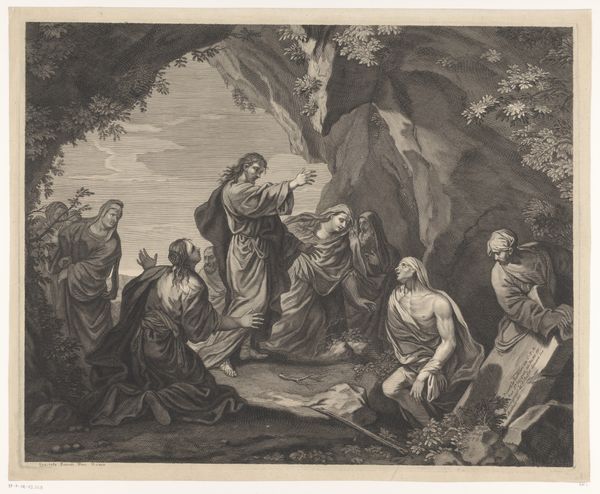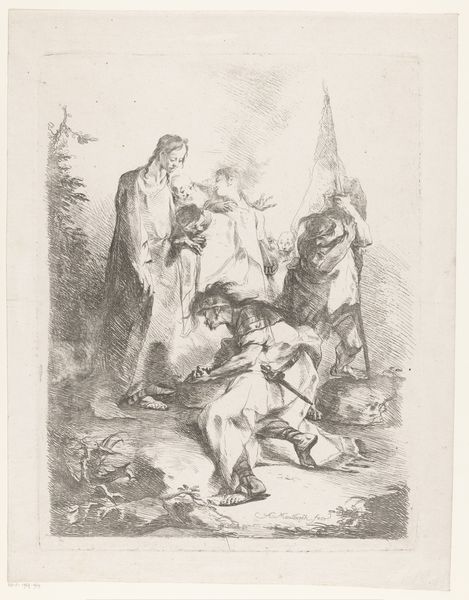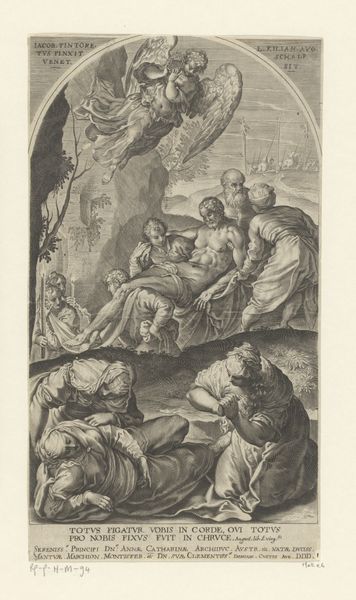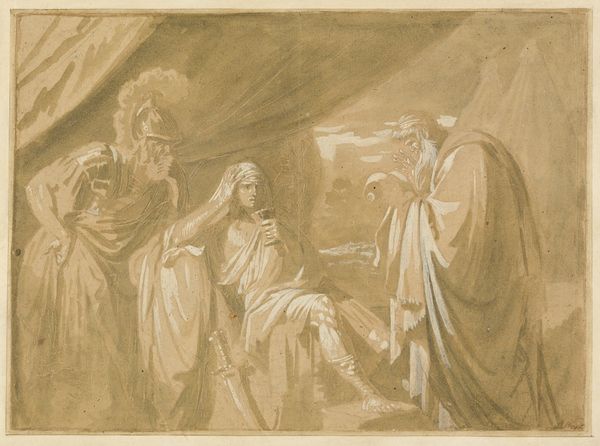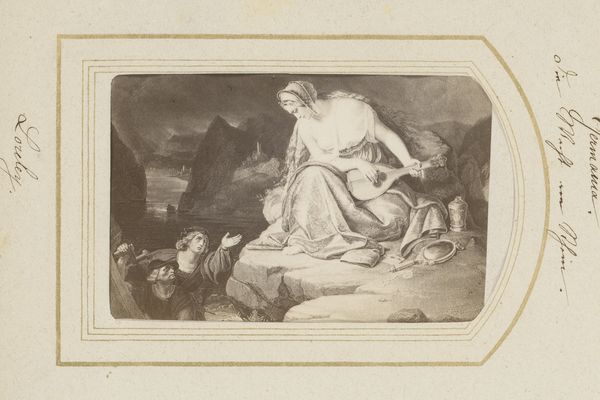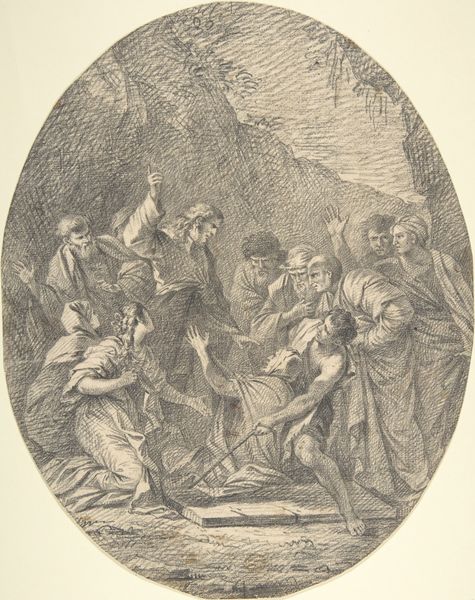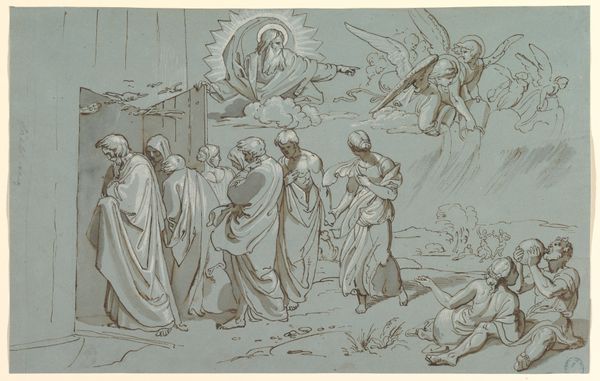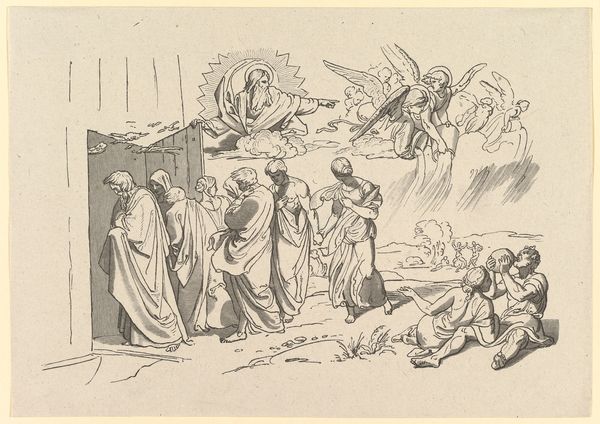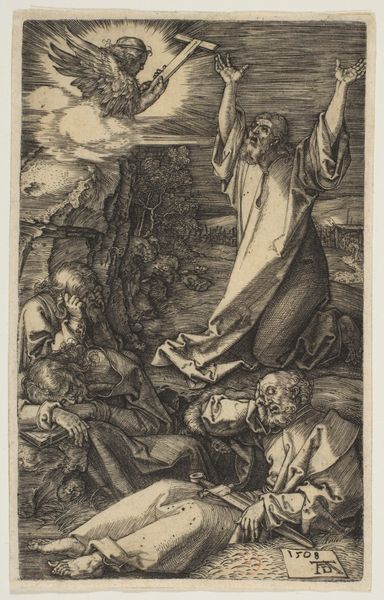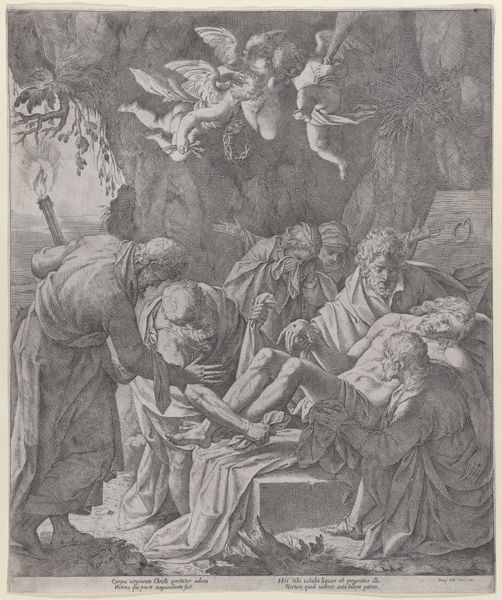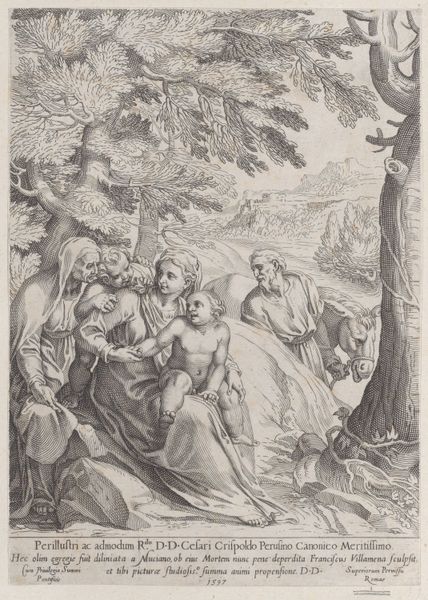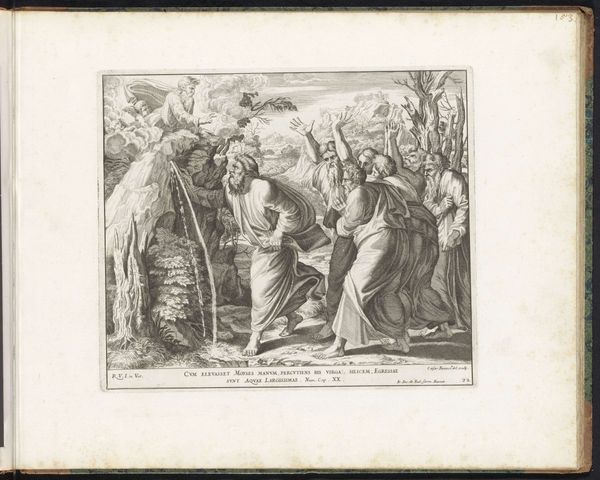
drawing, print, etching
#
drawing
#
narrative-art
#
baroque
# print
#
etching
#
figuration
#
history-painting
Dimensions: Sheet (Trimmed): 4 5/16 × 7 1/8 in. (11 × 18.1 cm)
Copyright: Public Domain
Editor: Here we have Salvatore Castiglione’s etching, "Resurrection of Lazarus," from 1645, currently at the Metropolitan Museum of Art. It strikes me as a really dynamic composition, all these figures emerging from darkness. What significance do you find in this work? Curator: The dramatic chiaroscuro immediately suggests the profound visual language of the Baroque. But, more specifically, the act of resurrection, the awakening, it’s such a potent symbol, isn't it? It carries cultural memory, naturally tied to faith, but even further back, doesn't it evoke older, more primal beliefs in cycles of death and rebirth that resonate deeply within us, regardless of religious affiliation? Editor: So it's about more than just the biblical story? Curator: Indeed. Consider how Castiglione uses light. It's not just illuminating the scene; it's radiating outward from Christ, acting as a visual metaphor for divine power overcoming mortality. That dazzling burst is also connected to older traditions around sun gods or the return of light overcoming winter’s darkness, things that feed the subconscious and inform how we continue to process faith. The figures cowering away almost reinforce the terror of life's mysteries being challenged. Does that resonate for you? Editor: Yes, I hadn’t thought about it like that, linking the Christian imagery to more ancient symbolic systems of light and rebirth. It adds layers of depth beyond the purely religious narrative. Curator: Exactly. That layering is key to understanding its enduring power. Editor: So, what began as simply a bible story now feels incredibly layered with much older imagery and psychological impact. Curator: Precisely, and that's the magic of iconography – symbols speak across centuries and cultures.
Comments
No comments
Be the first to comment and join the conversation on the ultimate creative platform.
